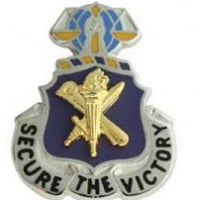Welcome to the FlexRadio Community! Please review the new Community Rules and other important new Community information on the Message Board.
Need the latest SmartSDR or 4O3A Genius Product Software?
SmartSDR v4.1.3 | SmartSDR v4.1.3 Release Notes
SmartSDR v3.10.15 | SmartSDR v3.10.15 Release Notes
The latest 4O3A Genius Product Software and Firmware
SmartSDR v4.1.3 | SmartSDR v4.1.3 Release Notes
SmartSDR v3.10.15 | SmartSDR v3.10.15 Release Notes
The latest 4O3A Genius Product Software and Firmware
If you are having a problem, please refer to the product documentation or check the Help Center for known solutions.
Need technical support from FlexRadio? It's as simple as Creating a HelpDesk ticket.
Need technical support from FlexRadio? It's as simple as Creating a HelpDesk ticket.
using fiber instead of cat5 question
Bill-W9OL
Member ✭✭
I still have 3 open ports on my Linksys Switch. Plus one that is presently connected to the 6K.
Wondering if this may help if I get two sets of cat to fiber converters, one for the 6K and one for the dedicated ham only computer which is connected presently to the 5K via cat 5.
Open to suggestions or a cheaper way of doing it.
Wondering if this may help if I get two sets of cat to fiber converters, one for the 6K and one for the dedicated ham only computer which is connected presently to the 5K via cat 5.
Open to suggestions or a cheaper way of doing it.
0
Answers
-
Bill,
If you prefer you can convert to/from fiber with a set of converters and short fiber jumper for each port. Or you can replace the switch with a fiber connected switch and then use sort CAT5 jumpers to each of the devices. For more than 1 port it's less expensive to replace the switch.
Regards, Al / NN4ZZ
al (at) nn4zz (dot) com


************ Here is my setup *****************
1 -
I wonder what a setup like this will buy you? True you are isolating the flex 6700 with fiber, however, what about the electrical connections to all the devices on the enet switch? Are all the devices on conditioned power and what happens if lightning strikes your power line? Just curious.0
-
Don,
The main reason I added a fiber link for the ethernet connection is lightning protection for the ethernet interface on the radio. I've had nearby strikes before where the long CAT5 cable run acted like an antenna and took out the ethernet interface on my PC motherboard.
It was easily repaired by adding an ethernet card to the PC. That would not be as easy to fix if the ethernet interface on the radio is zapped. Probably means a trip back to TX.
The RF isolation is just another benefit.
The ethernet interface is often more sensitive than other avenues. But as you noted lightning may still find other paths to your radio unless you address all of them.
Regards, Al / NN4ZZ Al (at) nn4zz (dot) com
1 -
Al, I was curious as I looked into this process back when you first brought it up early on.
Don0 -
The Flex-6000 is a gigabit device. It may not require over 100MB/s currently, but to future proof your setup you would want to use gigabit switches/media converters. These are more costly and less abundant on the surplus market (though they certainly are out there). I use fiber to optically isolate the computers in my house from my networked ham radio gear. My shack is also on a seperately derrived ground and the 60Hz load conductors between the house and shack are isolated by a 25kVA transformer. I have most of my gear hooked up via fiber. In some cases, it involves embedding serial to ethernet and ethernet to fiber media converters into or adjacent to equipment. It can help eliminate RFI generated from copper ethernet cables strung all over the shack. Can I really justify the cost of doing ALL of this? Nope. I do it because its another hobby of mine, and it just feels right (previous job was a fiber optic systems engineer). At one point I bought a lot of gigabit fiber converters on ebay, I think it was 12 for 120 bucks... (What a deal!) If you could get a deal like that, then I would proceed as you planned with 4 media converters. You might be able get a good deal on a giagabit switch that has has two gigabit fiber ports on it (Ive seen the Linksys SRW2008 sell for as low as $40, and works great when upgraded to the latest firmware) That plus two media converters would have you covered. Gigabit switches with more than 2 fiber connections become quite pricey (and watch out for surplus SAN Fibre Channel switches, these have lots of fiber optic ports but the FC switches available on the surplus market at a reasonable price rarely support TCP/IP traffic). At the end of the day, you cannot neglect proper grounding of both your computer and radio equipment, afterall, its nearly impossible to completely isolate them if they are both connected to mains power. Also, if you go fiber, have a spare cables on hand. They are less forgiving than cat5 and when your cat knocks you bookshelf over and it crushes your fiber cable, that rare DX you are trying to work isnt going to wait for you to polish a new connector on your cable. And with fiber, cleanliness is next to godlieness; have dedicated fiber cleaning cloths and cletops available and clean your connectors before every connection. I could go on for hours about fiber optics... but in effort to keep somewhat on-topic I will stop here and wait for more specific requests.1
-
Greg, Good info. One reason I selected the premade fiber jumper cables is to avoid the need for special tools to make them myself. And the potential problems if they are not made correctly. I also got an extra set for a spare, just in case. The cost for the 100mb version was pretty good and I figured if I ever need to upgrade to gigabit in the future the prices will be better. The cost for my setup was about $150. Not much when you consider the overall cost of the 6700 and other related peripherals. Regards, Al / NN4ZZ0
-
Is it possible to substitute CAT 5 cables with Fiber cables and CISCO transverters on each end without replacing CAT switch?
0 -
I believe that would work.
Don - kx9q
0
Leave a Comment
Categories
- All Categories
- 381 Community Topics
- 2.1K New Ideas
- 634 The Flea Market
- 8.3K Software
- 133 SmartSDR+
- 6.4K SmartSDR for Windows
- 185 SmartSDR for Maestro and M models
- 430 SmartSDR for Mac
- 272 SmartSDR for iOS
- 259 SmartSDR CAT
- 198 DAX
- 382 SmartSDR API
- 9.4K Radios and Accessories
- 42 Aurora
- 266 FLEX-8000 Signature Series
- 7.2K FLEX-6000 Signature Series
- 956 Maestro
- 56 FlexControl
- 866 FLEX Series (Legacy) Radios
- 929 Genius Products
- 464 Power Genius XL Amplifier
- 340 Tuner Genius XL
- 125 Antenna Genius
- 298 Shack Infrastructure
- 210 Networking
- 461 Remote Operation (SmartLink)
- 144 Contesting
- 789 Peripherals & Station Integration
- 140 Amateur Radio Interests
- 1K Third-Party Software

